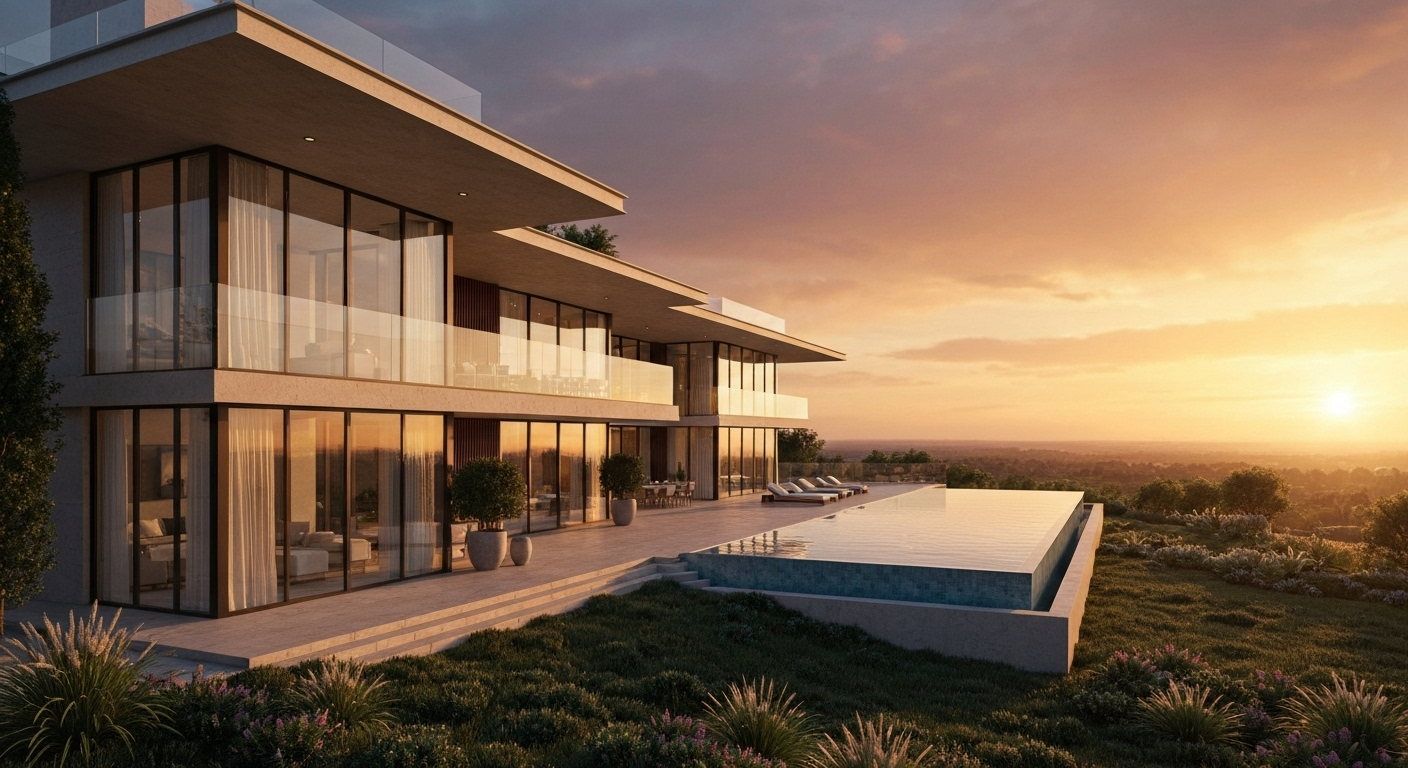Key Highlights
- The luxury real estate market is stabilizing, with more inventory and slower price growth.
- Today’s luxury buyers prefer smaller, well-designed homes with high-end, sustainable features.
- All-cash purchases are common, but financing is returning as interest rates shift.
- The luxury market is increasingly global, with unique trends in cities like Dubai, Paris, and London.
- Real estate professionals are adapting by understanding the evolving needs of affluent clients.
- Demand is booming in specific regions, especially for second homes and "workcation" destinations.
Introduction
The world of luxury real estate is constantly changing, much like a travel itinerary that needs updating as new destinations emerge. In recent years, the luxury market has been shaped by economic shifts, evolving tastes, and new technology. This dynamic environment creates fresh opportunities and challenges for luxury buyers. Understanding these trends is key to successfully navigating the real estate landscape and making informed decisions, whether you're searching for a primary residence or a dream second home.
Top 8 Insights into the Real Estate Luxury Market
Navigating the luxury real estate market requires a deep understanding of its current state. From evolving buyer demands to financing shifts, several key luxury real estate trends are defining the industry today. Staying informed about these changes is crucial for anyone looking to enter or invest in this exclusive sector.
Below, we explore the top eight insights that are reshaping the market. These points cover everything from luxury home marketing to the impact of global economics, giving you a comprehensive view of what to expect.
1. Evolving Buyer Preferences in High End Housing Market

A major trend in the high end housing market is a shift toward smaller, more luxurious homes. Luxury buyers are increasingly choosing convenience and financial flexibility, opting for properties that are easier to maintain without giving up high-end finishes. This allows for more time and resources to be dedicated to travel, leisure, and other investments.
These buyers aren't just downsizing; they are prioritizing quality over quantity. Homes with smart design, premium materials, and unique features are in high demand. Sustainability and energy efficiency are also top priorities, with buyers seeking homes that offer long-term cost savings and a reduced environmental footprint. Smart home technology is no longer a perk but an expectation, offering seamless integration for modern living.
Key preferences for today's luxury buyers include:
- Smart home technology: Full automation and AI-powered systems for convenience.
- Sustainability: Solar panels, water recycling, and passive design are becoming standard.
- Resiliency: Features like storm-proof roofing and fire-resistant materials in prone areas.
- Premium outdoor spaces: Well-designed backyards and recreational areas.
2. Impact of Limited Inventory on Luxury Home Prices
After years of intense competition, the luxury home market is beginning to stabilize. An increase in available high-end properties is giving buyers more choices and cooling the bidding wars that once dominated the market. While high demand persists, the extreme price surges and bare-bones inventory of the past are leveling off, creating more balanced market conditions.
However, the supply of new luxury homes is still constrained. Factors like inflation and rising construction costs are restricting the development of new luxury properties. This limited inventory for new builds keeps demand high for existing homes, which in turn supports their list prices. This dynamic ensures that while the market is balancing, prices for desirable properties remain strong.
While some markets are seeing continued price growth, others are experiencing corrections, suggesting a shift in trends.
- New York – -3.2%
- Austin, TX – -1.5%
3. All-Cash Purchases and Financing Trends in Luxury Real Estate

Cash has long been king in the luxury real estate sector, and all-cash purchases remain a powerful tool. Buyers who can make cash offers often have an advantage in competitive situations, as it signals a straightforward and reliable transaction. This preference for cash deals is driven by a desire to avoid high borrowing costs and the complexities associated with mortgages.
Despite the dominance of cash, financing is making a comeback as mortgage rates slowly decline from their recent peaks. While rates are still higher than pre-pandemic levels, their gradual descent is reopening financing as a viable option for more luxury buyers. This signals a return to more normal market behavior, where financial flexibility becomes a key part of the purchasing decision.
Beyond traditional mortgages, savvy buyers are exploring creative financing methods. These alternatives offer different ways to fund a real estate purchase.
- Margin loans
- Stock portfolio loans
- Private banking credit lines
4. Differences Between Major US Cities and Global Luxury Markets
The luxury real estate market in the United States, with hubs like Los Angeles and Beverly Hills, shows distinct trends compared to global luxury markets. In the U.S., California remains a highly desirable market for its prime coastal properties, despite high entry prices. At the same time, states like Texas are seeing steady growth due to business opportunities and favorable tax incentives.
In contrast, the global luxury real estate landscape is evolving differently. For instance, Dubai's prime real estate market is projected to grow by 5% in 2025, driven by a sharp drop in listings. Paris is experiencing a renaissance, with prices expected to rise as American and British buyers take advantage of a weaker euro.
London's market shows modest short-term growth, with stronger gains anticipated over the next five years. These international trends highlight how global economic factors and local supply-and-demand dynamics create unique opportunities and challenges compared to the prime real estate markets within the United States.
5. Rising Demand in Specific Neighborhoods and Regions

Even with economic shifts, the demand for luxury homes, particularly second homes, remains strong. Buyers are flocking to coastal retreats, mountain getaways, and prestigious urban locations for both leisure and investment. This high demand is transforming many vacation towns into "workcation" destinations, where remote work can be combined with a high-quality lifestyle.
Florida's coastal locations continue to be a hotspot for second home purchases, thanks to remote work flexibility and the appeal of year-round sunshine. The market for luxury second homes is outpacing the traditional real estate market, underscoring their appeal as versatile assets. This trend is a clear indicator of where affluent buyers are choosing to invest in a luxury property.
Specific areas are seeing a notable surge in interest.
- Florida: Coastal areas are popular for their sunny climate and lifestyle.
- Texas: Cities with strong business opportunities are attracting buyers.
- Resort Destinations: Mountain and coastal towns are becoming year-round hubs.
6. Role of Real Estate Agencies in Adapting to Luxury Market Shifts

To succeed in today's environment, real estate agencies and jejich real estate brokers must adapt to the evolving needs of affluent clients. This means going beyond simply listing properties and instead providing a comprehensive, high-touch service. Agents who understand the mindset, preferences, and lifestyle of luxury buyers are better equipped to build trust and deliver results.
A successful real estate team in the luxury sector familiarizes itself with a client's world, from design brands to financial strategies. This deep understanding allows them to market properties effectively and negotiate deals that work for both parties. In a market where some overpriced homes sit longer, skilled negotiation and adherence to a strict code of ethics are essential for creating win-win outcomes.
Ultimately, real estate professionals who can provide expert guidance on market trends, financing options, and property features will stand out. By acting as trusted advisors, they can navigate the complexities of the luxury market and help their clients achieve their real estate goals.
Conclusion
The luxury real estate market is a dynamic and exciting landscape that reflects the evolving desires of affluent buyers. By understanding the key insights we've explored, you can navigate this exclusive sector with confidence. From shifting buyer preferences to the impact of limited inventory, being informed is essential for making strategic decisions, whether you're a buyer or an investor. Embracing these trends not only positions you for success but also allows you to appreciate the unique opportunities within the luxury market. If you're ready to take the next step in your luxury real estate journey, don’t hesitate to reach out for personalized guidance and insights tailored to your needs.





